-
 Bitcoin
Bitcoin $76,896.9922
-2.49% -
 Ethereum
Ethereum $1,473.1976
-5.32% -
 Tether USDt
Tether USDt $0.9992
-0.04% -
 XRP
XRP $1.8146
-4.69% -
 BNB
BNB $556.9810
0.12% -
 USDC
USDC $1.0001
0.01% -
 Solana
Solana $105.9952
-0.80% -
 TRON
TRON $0.2308
1.15% -
 Dogecoin
Dogecoin $0.1431
-3.57% -
 Cardano
Cardano $0.5615
-3.59% -
 UNUS SED LEO
UNUS SED LEO $9.0012
0.69% -
 Toncoin
Toncoin $3.0061
-2.13% -
 Chainlink
Chainlink $10.9621
-4.38% -
 Stellar
Stellar $0.2234
-3.67% -
 Avalanche
Avalanche $16.1069
-3.34% -
 Sui
Sui $1.9654
-3.26% -
 Hedera
Hedera $0.1496
-0.15% -
 Shiba Inu
Shiba Inu $0.0...01063
-6.43% -
 MANTRA
MANTRA $6.1910
-1.06% -
 Bitcoin Cash
Bitcoin Cash $271.2156
-1.79% -
 Dai
Dai $1.0001
0.01% -
 Polkadot
Polkadot $3.4118
-5.14% -
 Litecoin
Litecoin $69.6171
-2.88% -
 Ethena USDe
Ethena USDe $0.9987
-0.01% -
 Bitget Token
Bitget Token $4.0464
-0.85% -
 Pi
Pi $0.5710
-4.11% -
 Hyperliquid
Hyperliquid $11.2530
-2.59% -
 Monero
Monero $200.1748
-0.71% -
 OKB
OKB $51.2190
0.06% -
 Uniswap
Uniswap $4.7961
-6.30%
What is a stablecoin? How does it maintain its peg to fiat?
Stablecoins minimize crypto volatility by pegging to assets like USD; types include fiat-collateralized, crypto-collateralized, and algorithmic, each with unique stability mechanisms.
Apr 05, 2025 at 12:21 pm
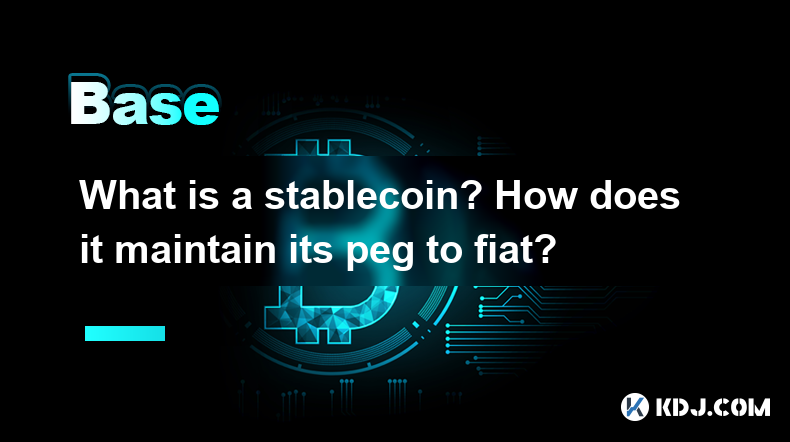
A stablecoin is a type of cryptocurrency designed to minimize the volatility typically associated with other cryptocurrencies like Bitcoin and Ethereum. Stablecoins aim to maintain a stable value by pegging their value to a specific asset, most commonly a fiat currency like the US dollar. This pegging mechanism is crucial for their function, as it allows them to serve as a reliable medium of exchange and store of value within the cryptocurrency ecosystem.
Types of Stablecoins
There are several types of stablecoins, each with its own method of maintaining its peg to fiat. The most common types include:
Fiat-collateralized stablecoins: These stablecoins are backed by reserves of fiat currency held in bank accounts. Examples include Tether (USDT) and USD Coin (USDC). The value of these stablecoins is maintained by the issuer holding an equivalent amount of the pegged fiat currency in reserve.
Crypto-collateralized stablecoins: These stablecoins are backed by other cryptocurrencies, often over-collateralized to account for the volatility of the backing assets. DAI, issued by MakerDAO, is a prominent example. The stability of these stablecoins is maintained through smart contracts and collateral management.
Algorithmic stablecoins: These stablecoins use algorithms to control the supply of the token in response to changes in demand, aiming to maintain the peg without any collateral. An example is TerraUSD (UST), which used to be part of the Terra ecosystem. The stability of these stablecoins relies on the effectiveness of the algorithm and the trust in the system.
How Fiat-Collateralized Stablecoins Maintain Their Peg
Fiat-collateralized stablecoins, such as Tether (USDT) and USD Coin (USDC), maintain their peg to fiat through a straightforward mechanism. The issuer holds an equivalent amount of the pegged fiat currency in reserve. For example, if there are 1 billion USDT in circulation, the issuer should hold 1 billion USD in reserve. This reserve is typically held in bank accounts and is subject to regular audits to ensure transparency and trust.
Issuance and Redemption: When a user wants to acquire USDT, they send USD to the issuer, who then mints an equivalent amount of USDT. Conversely, when a user wants to redeem USDT for USD, they send USDT to the issuer, who burns the USDT and sends back the equivalent amount of USD. This process ensures that the total supply of USDT remains pegged to the total reserve of USD.
Transparency and Audits: To maintain trust, issuers of fiat-collateralized stablecoins often publish regular attestations or audits of their reserves. These audits are conducted by third-party firms to verify that the reserves match the circulating supply of the stablecoin.
How Crypto-Collateralized Stablecoins Maintain Their Peg
Crypto-collateralized stablecoins, such as DAI, maintain their peg through a more complex mechanism involving over-collateralization and smart contracts. DAI is backed by other cryptocurrencies, typically Ether (ETH), and the collateral is held in smart contracts on the Ethereum blockchain.
Over-Collateralization: To mint DAI, users must lock up more value in ETH than the amount of DAI they wish to create. For example, to mint 100 DAI, a user might need to lock up 150 USD worth of ETH. This over-collateralization helps to absorb the volatility of the backing asset.
Stability Mechanism: If the value of DAI deviates from its peg, the system automatically adjusts. If DAI's value falls below 1 USD, users can buy DAI at a discount and redeem it for more valuable collateral, which helps to push the price back up. Conversely, if DAI's value rises above 1 USD, users can mint more DAI by locking up more collateral, increasing the supply and pushing the price back down.
Liquidation: If the value of the collateral falls below a certain threshold, the smart contract can automatically liquidate the collateral to ensure that the DAI remains fully backed. This process helps to maintain the peg by ensuring that the collateral always covers the value of the issued DAI.
How Algorithmic Stablecoins Maintain Their Peg
Algorithmic stablecoins, such as the now-defunct TerraUSD (UST), maintain their peg through a different mechanism that relies on supply and demand dynamics controlled by algorithms. These stablecoins do not have any collateral backing them; instead, they use a protocol to adjust the supply of the token in response to market conditions.
Rebasing: Some algorithmic stablecoins use a rebasing mechanism, where the total supply of the token is adjusted periodically to maintain the peg. If the price of the stablecoin is above the peg, the supply is increased, diluting the value of each token. If the price is below the peg, the supply is decreased, increasing the value of each token.
Seigniorage: Other algorithmic stablecoins use a seigniorage model, where the protocol issues new tokens when the price is above the peg and buys back tokens when the price is below the peg. This buying and selling of tokens helps to stabilize the price around the peg.
Market Confidence: The success of algorithmic stablecoins heavily relies on market confidence and the effectiveness of the algorithm. If users lose faith in the system, it can lead to a death spiral where the stablecoin's value collapses.
Challenges and Risks
Maintaining a stablecoin's peg to fiat is not without challenges and risks. Fiat-collateralized stablecoins face the risk of reserve mismanagement or fraud, where the issuer might not hold the full amount of the pegged fiat currency in reserve. This can lead to a loss of trust and a potential collapse of the stablecoin's value.
Crypto-collateralized stablecoins face the risk of collateral volatility, where the value of the backing cryptocurrencies can fluctuate significantly, potentially leading to under-collateralization and instability. The complexity of the smart contracts also introduces the risk of bugs or exploits that could compromise the system.
Algorithmic stablecoins face the risk of market confidence, where any loss of trust in the system can lead to a rapid depegging and collapse of the stablecoin's value. The lack of collateral also means that these stablecoins are more vulnerable to market manipulation and speculative attacks.
Frequently Asked Questions
Q: Can stablecoins be used for everyday transactions?
A: Yes, stablecoins can be used for everyday transactions, especially in regions where traditional banking infrastructure is limited. Their stability makes them a reliable medium of exchange, and many platforms and merchants accept stablecoins as payment.
Q: Are stablecoins regulated?
A: The regulation of stablecoins varies by jurisdiction. Some countries have specific regulations for stablecoins, while others treat them as part of broader cryptocurrency regulations. It's important for users to be aware of the regulatory environment in their region.
Q: How do stablecoins affect the broader cryptocurrency market?
A: Stablecoins play a crucial role in the broader cryptocurrency market by providing liquidity and stability. They are often used as a safe haven during periods of high volatility and serve as a bridge between traditional finance and the cryptocurrency ecosystem.
Q: Can stablecoins be used for lending and borrowing?
A: Yes, stablecoins are commonly used in decentralized finance (DeFi) platforms for lending and borrowing. Users can deposit stablecoins as collateral to borrow other cryptocurrencies or lend their stablecoins to earn interest.
Disclaimer:info@kdj.com
The information provided is not trading advice. kdj.com does not assume any responsibility for any investments made based on the information provided in this article. Cryptocurrencies are highly volatile and it is highly recommended that you invest with caution after thorough research!
If you believe that the content used on this website infringes your copyright, please contact us immediately (info@kdj.com) and we will delete it promptly.
- What Does the Proposal Entail?
- 2025-04-09 04:50:12
- Leveraging the Power of Presale Allocation
- 2025-04-09 04:50:12
- XRP Could Surge to $12.5 and Overtake Ethereum
- 2025-04-09 04:45:13
- Introducing Decentralized AI Agents to the Polygon Ecosystem
- 2025-04-09 04:45:13
- Bitcoin traders have been holding their breath in recent weeks, anticipating further clarity on US President Donald Trump's approach to digital assets.
- 2025-04-09 04:40:12
- Advancing Decentralized Payments and NFTs
- 2025-04-09 04:40:12
Related knowledge

What is Serenity?
Apr 08,2025 at 02:00pm
Serenity, also known as Ethereum 2.0, represents a major upgrade to the Ethereum blockchain. This ambitious project aims to address the scalability, security, and sustainability issues faced by the current Ethereum network. Serenity is not a single update but a series of upgrades that will transform Ethereum into a more efficient and robust platform. Th...
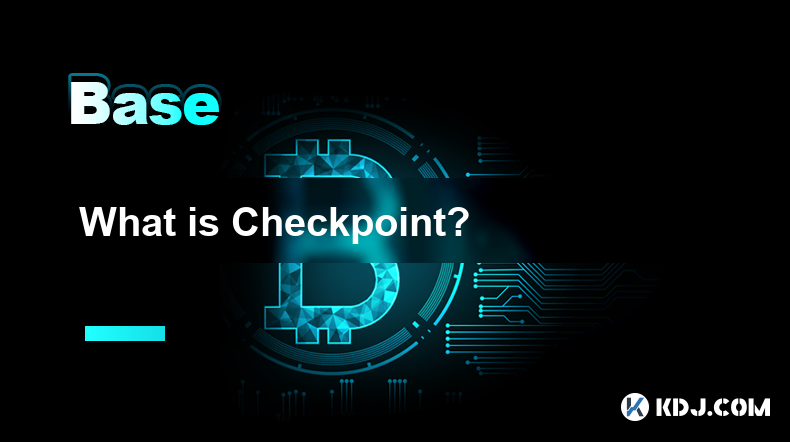
What is Checkpoint?
Apr 08,2025 at 05:08pm
A checkpoint in the context of blockchain and cryptocurrencies is a mechanism used to enhance the security and efficiency of a blockchain network. It serves as a snapshot of the blockchain at a specific point in time, which can be used to validate the integrity of the chain and prevent certain types of attacks. Checkpoints are particularly important in ...

What is Finality Gadget?
Apr 08,2025 at 04:14am
The Finality Gadget is a crucial component in the architecture of certain blockchain networks, particularly those that utilize a hybrid consensus mechanism. It plays a pivotal role in ensuring the finality of transactions, which means that once a transaction is confirmed, it cannot be altered or reversed. This article delves into the intricacies of the ...
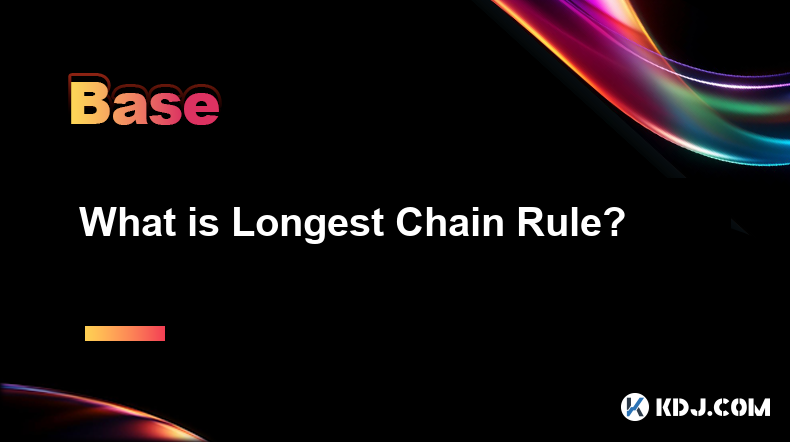
What is Longest Chain Rule?
Apr 08,2025 at 07:50am
The Longest Chain Rule is a fundamental concept in blockchain technology, particularly in the context of cryptocurrencies like Bitcoin. This rule is crucial for maintaining the integrity and security of the blockchain network. In essence, the Longest Chain Rule dictates that the valid blockchain is the one with the most cumulative proof-of-work, which i...
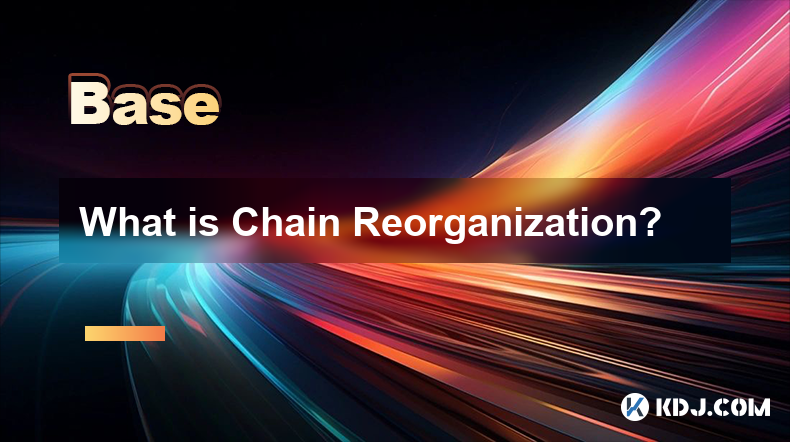
What is Chain Reorganization?
Apr 08,2025 at 03:08pm
What is Chain Reorganization? Chain reorganization, often referred to as a 'reorg,' is a fundamental concept in blockchain technology that can significantly impact the integrity and operation of a blockchain network. Chain reorganization occurs when a blockchain network replaces a previously accepted block or series of blocks with a new set of blocks, l...
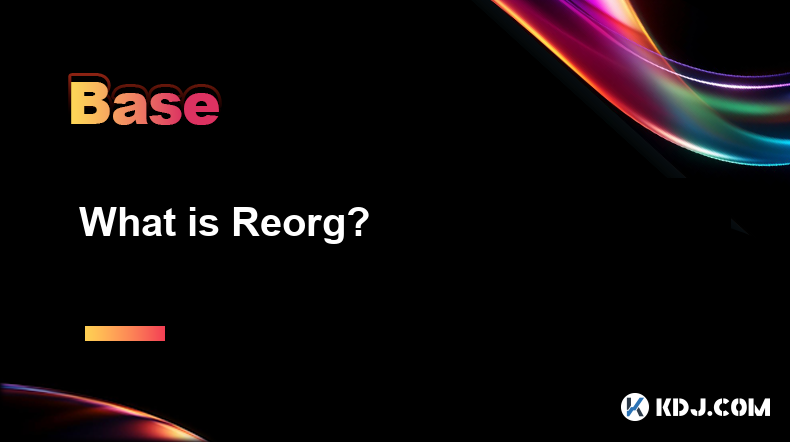
What is Reorg?
Apr 08,2025 at 11:08pm
What is Reorg?In the world of cryptocurrencies, particularly those that operate on blockchain technology, the term Reorg or Blockchain Reorganization is a critical concept that users and developers need to understand. A reorg refers to a situation where the blockchain undergoes a reorganization of its blocks, which can lead to changes in the accepted ve...

What is Serenity?
Apr 08,2025 at 02:00pm
Serenity, also known as Ethereum 2.0, represents a major upgrade to the Ethereum blockchain. This ambitious project aims to address the scalability, security, and sustainability issues faced by the current Ethereum network. Serenity is not a single update but a series of upgrades that will transform Ethereum into a more efficient and robust platform. Th...

What is Checkpoint?
Apr 08,2025 at 05:08pm
A checkpoint in the context of blockchain and cryptocurrencies is a mechanism used to enhance the security and efficiency of a blockchain network. It serves as a snapshot of the blockchain at a specific point in time, which can be used to validate the integrity of the chain and prevent certain types of attacks. Checkpoints are particularly important in ...

What is Finality Gadget?
Apr 08,2025 at 04:14am
The Finality Gadget is a crucial component in the architecture of certain blockchain networks, particularly those that utilize a hybrid consensus mechanism. It plays a pivotal role in ensuring the finality of transactions, which means that once a transaction is confirmed, it cannot be altered or reversed. This article delves into the intricacies of the ...

What is Longest Chain Rule?
Apr 08,2025 at 07:50am
The Longest Chain Rule is a fundamental concept in blockchain technology, particularly in the context of cryptocurrencies like Bitcoin. This rule is crucial for maintaining the integrity and security of the blockchain network. In essence, the Longest Chain Rule dictates that the valid blockchain is the one with the most cumulative proof-of-work, which i...

What is Chain Reorganization?
Apr 08,2025 at 03:08pm
What is Chain Reorganization? Chain reorganization, often referred to as a 'reorg,' is a fundamental concept in blockchain technology that can significantly impact the integrity and operation of a blockchain network. Chain reorganization occurs when a blockchain network replaces a previously accepted block or series of blocks with a new set of blocks, l...

What is Reorg?
Apr 08,2025 at 11:08pm
What is Reorg?In the world of cryptocurrencies, particularly those that operate on blockchain technology, the term Reorg or Blockchain Reorganization is a critical concept that users and developers need to understand. A reorg refers to a situation where the blockchain undergoes a reorganization of its blocks, which can lead to changes in the accepted ve...
See all articles






















































































